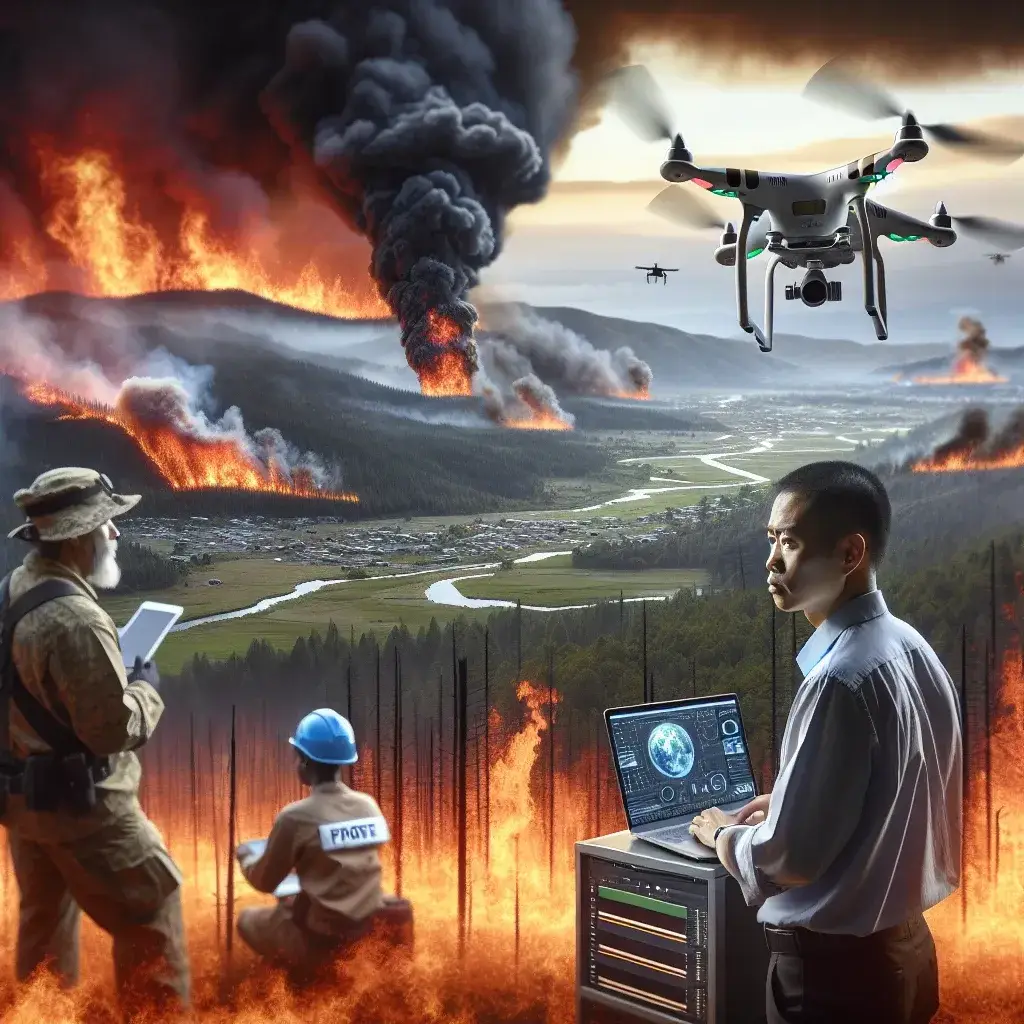Introduction
Natural disasters often strike with little warning, leading to catastrophic consequences for communities and ecosystems. Efficient crisis management is essential to mitigate these impacts. In recent years, the integration of drones and the Internet of Things (IoT) has revolutionized how we respond to such emergencies, providing innovative solutions for real-time data collection, analysis, and communication. This article explores the role of drones and IoT in crisis management, their benefits, challenges, and future prospects.
The Evolution of Crisis Management
Historically, crisis management relied heavily on ground-based resources, which often limited access to affected areas and delayed response times. Traditional methods, such as on-foot assessments and radio communications, faced significant challenges in terms of speed and efficiency. However, the advent of drones and IoT devices has transformed the landscape.
Understanding Drones and IoT
Drones, or unmanned aerial vehicles (UAVs), are aircraft without a human pilot on board. They can be remotely controlled or fly autonomously using pre-programmed flight plans. Drones are equipped with various sensors and cameras that enable them to capture high-resolution images and video, making them invaluable during disaster assessments.
The Internet of Things (IoT) refers to the network of interconnected devices that communicate and share data with each other over the internet. In the context of crisis management, IoT devices can monitor environmental conditions, track assets, and provide real-time updates to responders.
Applications in Natural Disasters
1. Damage Assessment
One of the primary uses of drones in natural disasters is damage assessment. Drones equipped with high-resolution cameras can survey large areas in a fraction of the time it would take traditional methods. For example, after a hurricane, drones can provide detailed aerial views of affected areas, helping emergency responders prioritize relief efforts.
2. Search and Rescue Operations
Drones can also play a crucial role in search and rescue missions. Equipped with thermal imaging cameras, they can locate survivors trapped under rubble or in remote locations. For instance, after the 2015 Nepal earthquake, drones were deployed to assist in locating victims and assessing the extent of the damage.
3. Real-time Data Collection
IoT devices deployed in disaster zones can gather crucial data about environmental conditions, such as temperature, humidity, and air quality. This information can help responders make informed decisions and allocate resources more effectively. For example, environmental sensors can detect hazardous conditions that may pose risks to first responders.
4. Communication and Coordination
In the chaos of a natural disaster, effective communication is critical. Drones can serve as temporary communication relays, helping maintain connectivity in areas where traditional communication infrastructure has failed. IoT devices can also streamline coordination among various response teams, ensuring that everyone is on the same page.
Benefits of Drones and IoT in Crisis Management
1. Enhanced Efficiency
By utilizing drones and IoT technologies, emergency response teams can significantly enhance their efficiency. Real-time data collection allows for quicker decision-making and resource allocation, ultimately saving lives.
2. Improved Safety
Drones can access hazardous areas without putting human lives at risk. This capability allows emergency responders to gather critical information without endangering themselves during dangerous situations.
3. Cost-effectiveness
While the initial investment in drone and IoT technology may be substantial, the long-term savings can be significant. Efficient damage assessments and resource allocation can reduce the overall cost of disaster response.
4. Scalability
Drones and IoT devices can be deployed rapidly in large numbers, allowing for scalable solutions that adapt to the scale of the disaster. This flexibility is vital in large-scale disasters where the affected areas can span vast regions.
Challenges and Limitations
1. Regulatory Hurdles
The use of drones is subject to strict regulations, which can vary significantly from one region to another. Navigating these laws can pose challenges for emergency responders, potentially delaying deployment.
2. Data Privacy Concerns
While drones and IoT devices collect valuable data, concerns about privacy and surveillance can arise. Establishing clear guidelines for data usage and sharing is essential to address these concerns.
3. Technical Reliability
Reliability is crucial in crisis situations. Technical failures in drones or IoT devices can lead to misinformation or ineffective responses. Regular maintenance and thorough training for operators are necessary to mitigate these risks.
The Future of Drones and IoT in Crisis Management
The future of crisis management with drones and IoT looks promising. As technology continues to evolve, we can expect several advancements:
- Enhanced Automation: Future drones will likely feature more advanced automation capabilities, allowing them to conduct missions with minimal human intervention.
- Integration with AI: The integration of artificial intelligence will enable drones and IoT devices to analyze data more effectively, leading to quicker and more accurate decision-making.
- Global Collaboration: Improved connectivity and data-sharing protocols can foster collaboration between international disaster response teams, enhancing global crisis management efforts.
- Increased Accessibility: As technology becomes more affordable, we can expect wider adoption of drones and IoT devices among local organizations and governments, further strengthening disaster readiness.
Conclusion
In the face of increasing natural disasters, the integration of drones and IoT technologies in crisis management offers a beacon of hope. These tools provide unparalleled efficiency, safety, and data-driven insights, allowing emergency responders to act swiftly and effectively. While challenges remain, the future of crisis management will undoubtedly be shaped by these innovative technologies, paving the way for more resilient communities. Embracing this change is not just an option; it is a necessity in an era where the unpredictability of natural disasters is becoming the new norm.

Leave a Reply